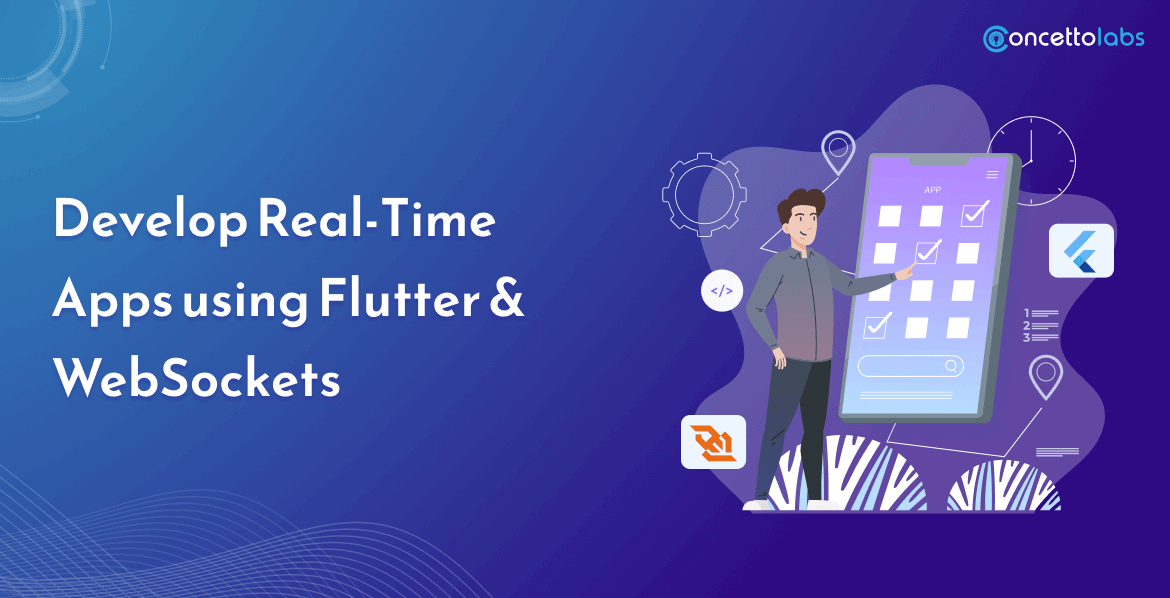
Summary: Real-time communication is very important for client-server interaction in today’s application. Using Dart’s WebSockets within Flutter allows seamless real-time data sharing. This blog explains how to integrate the WebSockets into Flutter apps to easy data transmission and enhance user experience.
Have you ever considered how important quick mobile app development and real-time features are for applications? Real-time capabilities are important for many operations including live notifications, stock market rate synchronization, and communications. REST alone necessitates several calls to a single endpoint to fulfill the above requirements. However, building Real-Time apps using Flutter and WebSockets, allows seamless bidirectional communication between the client and the server.
What is WebSocket?
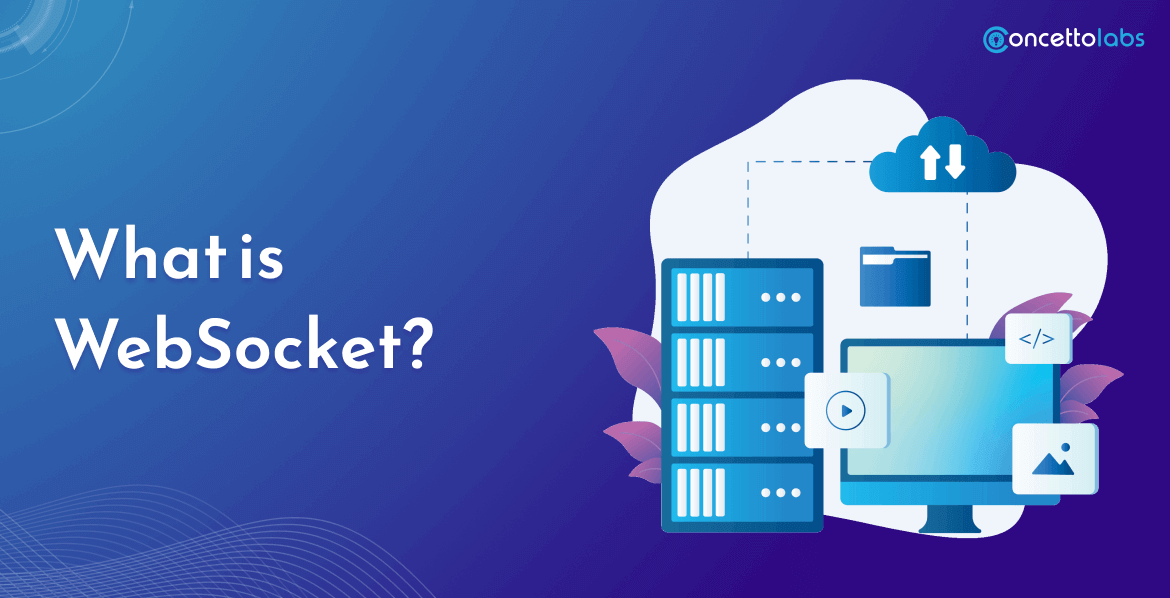
WebSocket is a bidirectional protocol that allows an open connection between the client and server and it is very similar to HTTP. Like HTTP, WebSocket allows the data transmission between client and server by creating a permanent connection. This allows a seamless real-time experience by enabling the transmission of messages between the client and the server at any time.
Examples of WebSocket include Games, trading applications, and chat apps. Moreover, if you need to use only static data, HTTP with REST API is preferred.
How do WebSockets Function?
WebSocket, a communication protocol, enables real-time, full-duplex communication between a client and a server through a single, persistent connection. Like HTTP, WebSocket can initiate the transmission between a client and the server by following the request-response architecture. This will deliver a seamless real-time experience by sending messages to the client and the server at any time of the day.
What is the Purpose of Using WebSockets?
Developers developed WebSockets to enable efficient real-time outcomes. WebSockets allows seamless and full-duplex communication between a server and the client. This eliminates the useless network traffic because the data can easily move in both directions via a single open connection. This will deliver speed and real-time functionality. Also, WebSocket allows servers to monitor clients and “push” data as required, which was not possible by HTTP.
WebSocket connections allow streaming text strings and binary data using messages. WebSocket messages consist of a data component, payload, and frame. This will help minimize overhead and latency because some of the non-payload data will be transferred across the current network connection. This is especially true when compared to HTTP requests and streaming methods.
WebSockets are used for various purposes like:
- Chat Apps
- Multiplayer online games
- Financial trading platforms
- Live Sport Updates
- Live Collaboration tools
- Real-Time Monitoring and Tracking
WebSocket Support Using Flutter
Flutter WebSocket provides wide and strong support for WebSockets using the WebSocket class. However, it is necessary to remember that this package depends on “dart.io” and “dart:html,” meaning we cannot compile for both web and mobile apps at the same time. To address this issue, the Dart team developed the ‘web_socket_channel’ package, which assembles both libraries, enabling seamless cross-platform app development.
Configuring the Dart Server Project
Initiate the project by creating a new file. Ensure that you have the most recent version of Dart SDK installed. Open the terminal window and execute the code below.
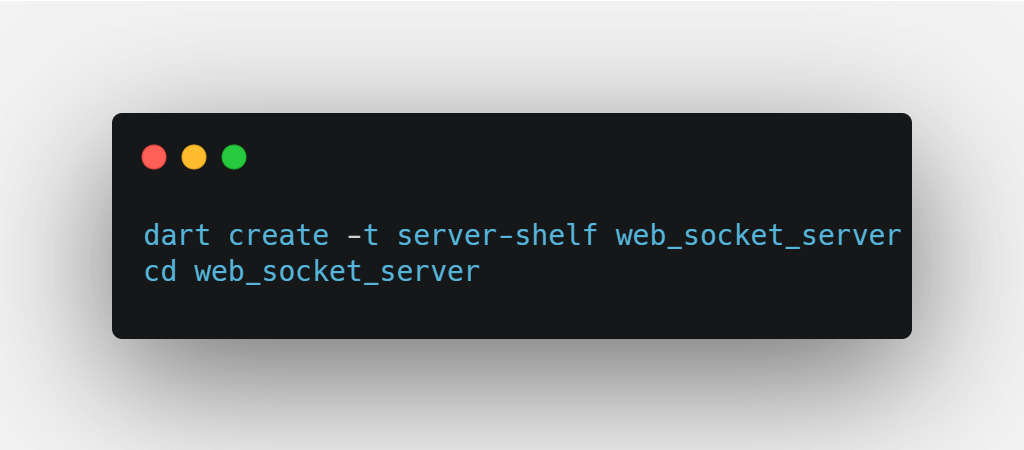
Developing WebSocket Server for Activating WebSocket IO Request
Check the Dart Server code, which is capable of actively listening to WebSocket IO requests made to it, ensuring that these requests are handled skillfully.
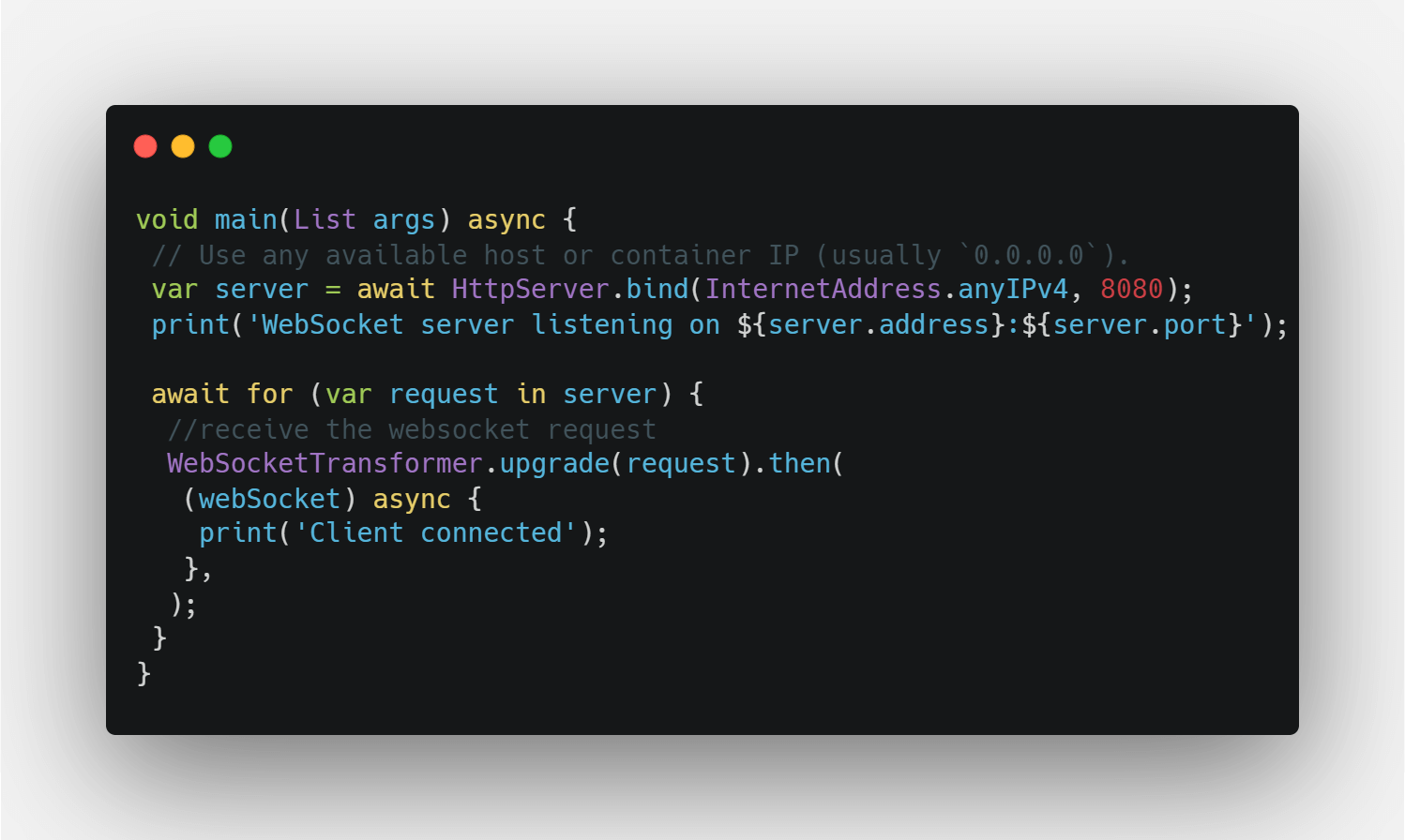
Let us now add some logic to send data to the connected client from our server. To be more precise, we will send the client prices for arbitrary bitcoin coins to monitor. This will allow us to monitor our client connection in real time because these costs will be updated every second.
Every time it is called, a specific function is created to provide five different random prices, ranging from 100 to 200.
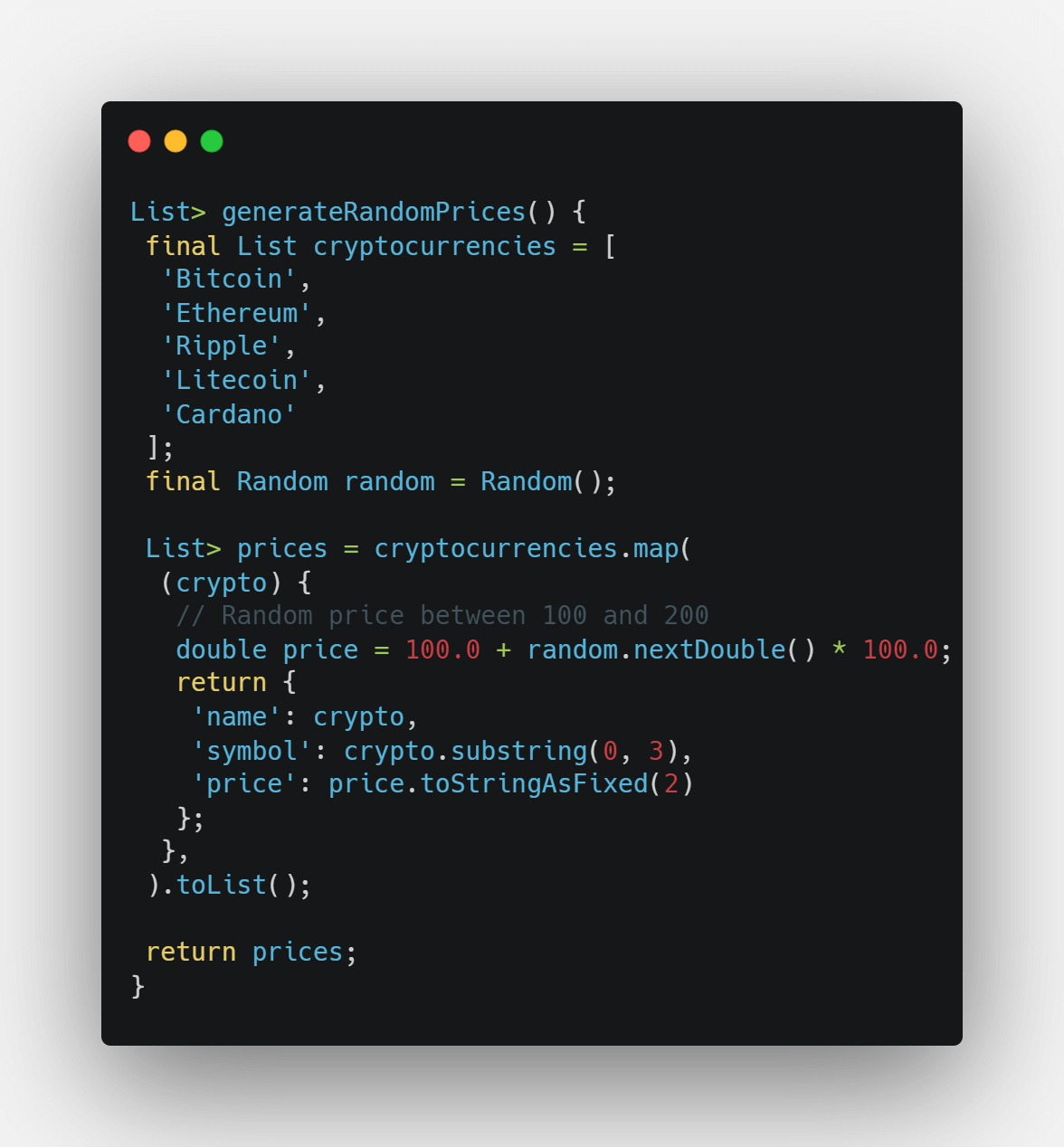
Now, implementing the logic to handle the WebSocket request and send back the cryptocurrency coin prices.
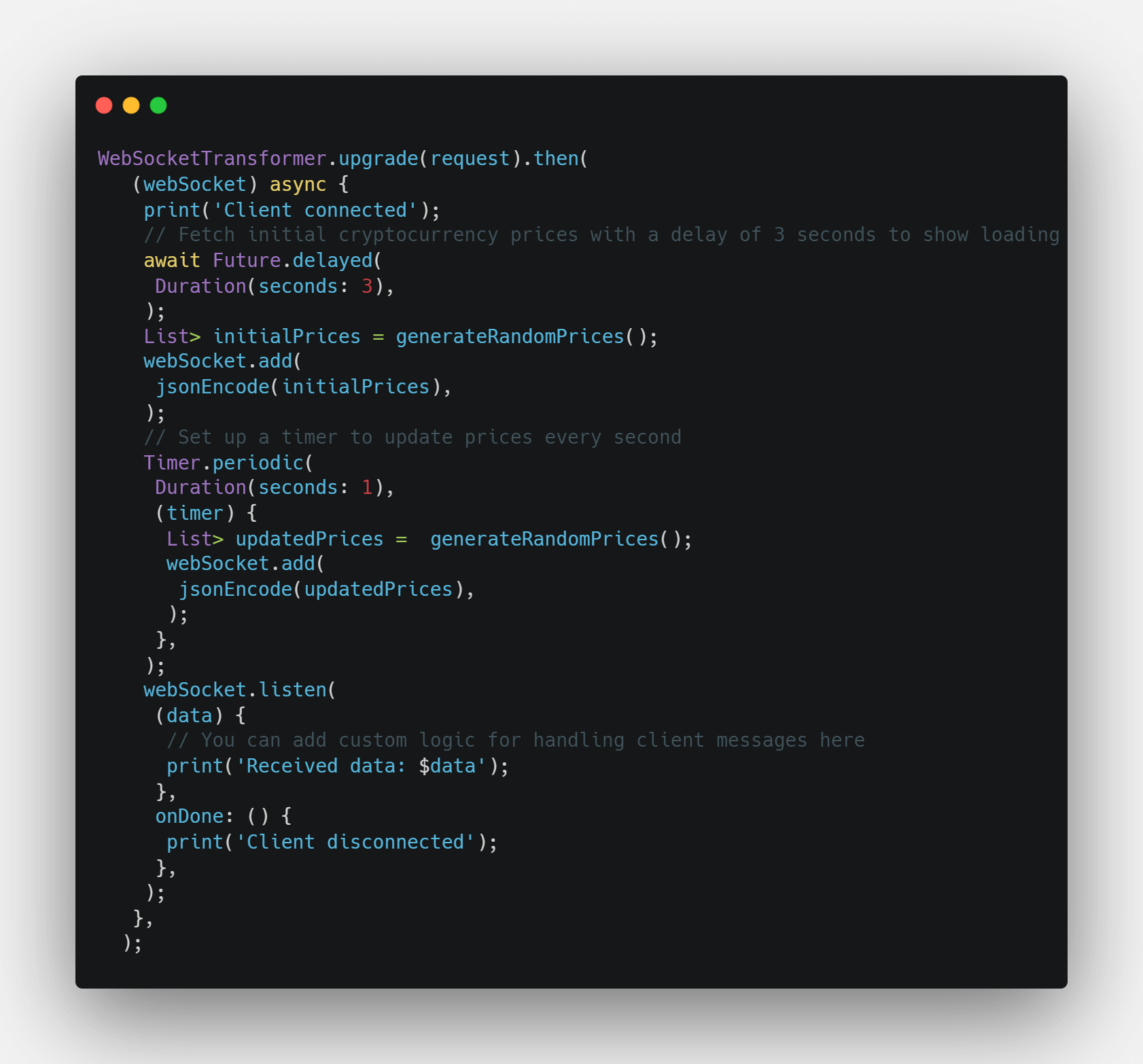
Additionally, to effectively control the loading behavior, we have added a 3-second wait to the initial request.
In your terminal, it is preferred to use the following command to execute the dart server project:
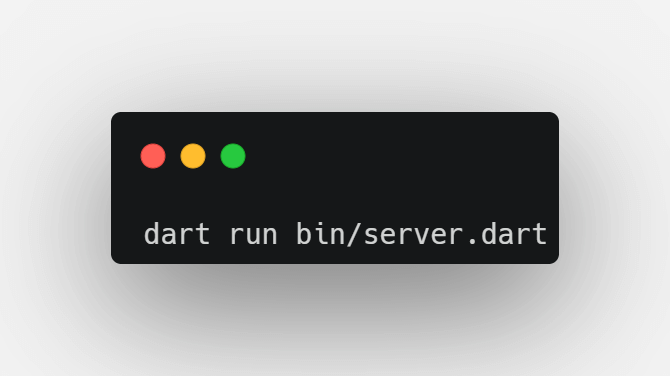
Setting the Flutter Project
To begin a new Flutter project, you must install the latest version of the Flutter SDK. Launch a terminal window and type the following commands:
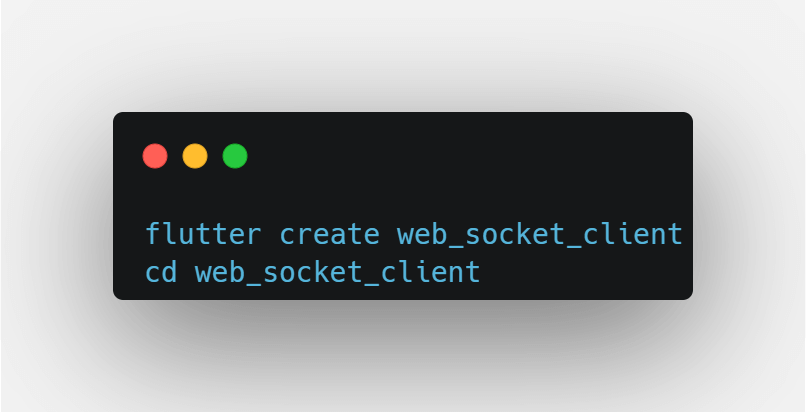
Adding WebSocket IO Dependencies
We need to integrate the web_socket_channel package into the project to use websockets in Dart easily. Open the “pubspec.yaml” file in the project’s root directory and add the below lines:
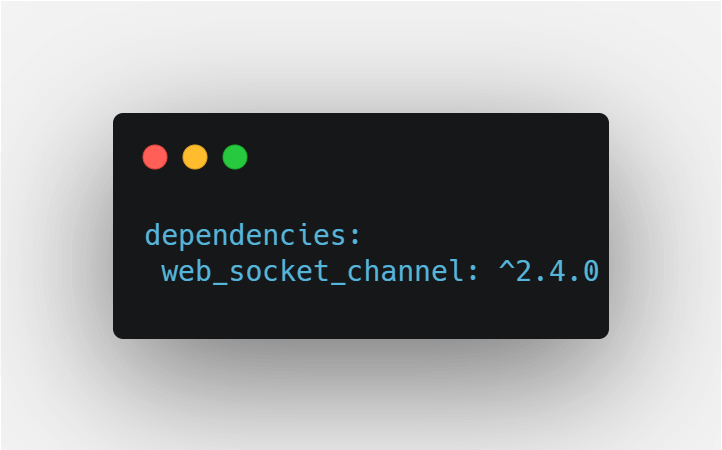
Do not forget to execute “flutter pub get” in the terminal to install and fetch the latest dependencies.
Connecting to the WebSocket
Now, after the project is completed, we will develop a simple app that will establish a connection with a WebSocket channel.
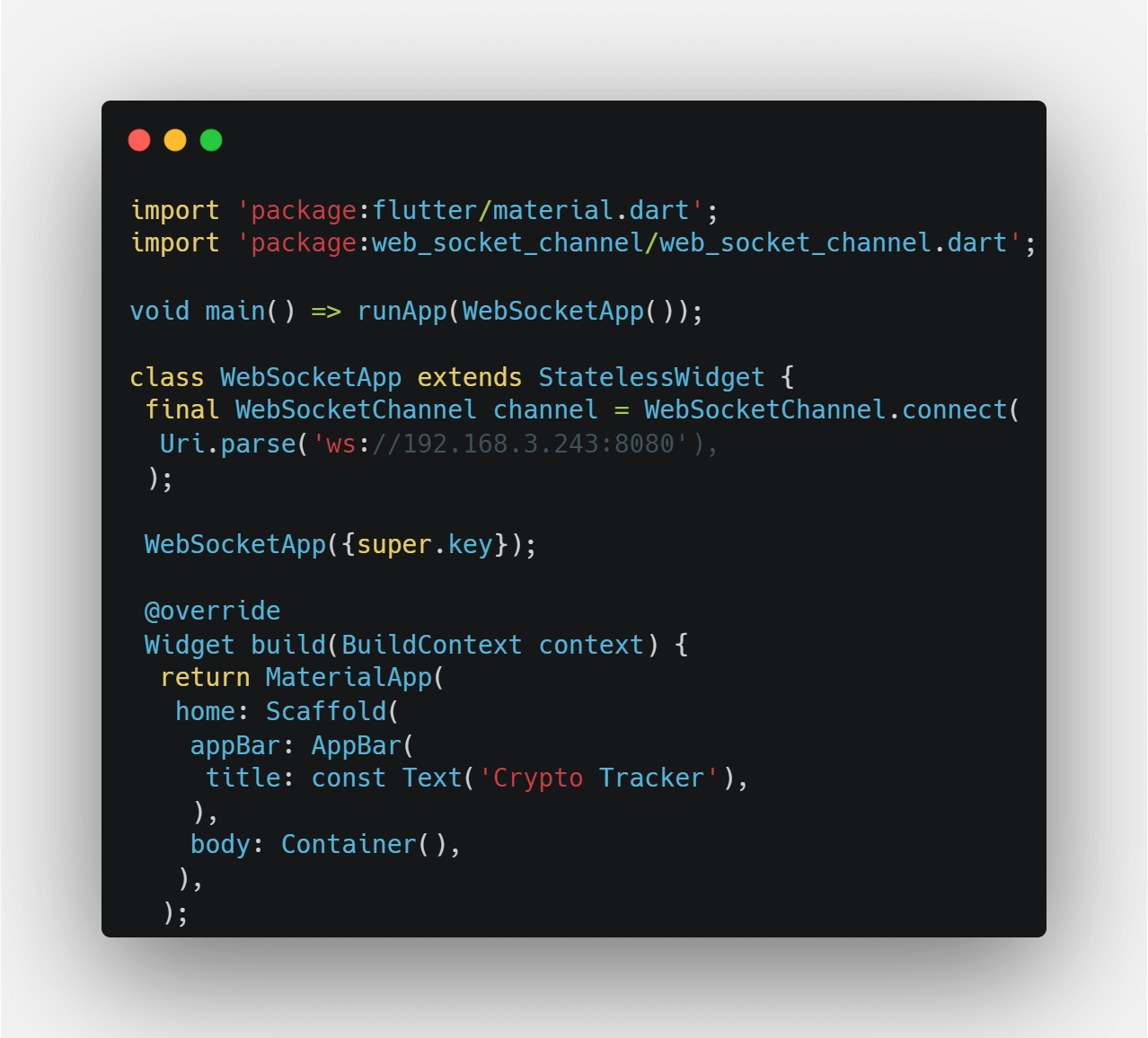
WebSocket URLs generally start with “ws:” or “wss:”. Here, we have successfully established a connection with a WebSocket and are now prepared to work with incoming data. However, one may wonder how this data will be updated and shown whenever fresh data is received from the server.
To overcome this question, we will use Flutter’s integrated StreamBuilder widget. This widget can refresh the data whenever new information is found. WebSocket depends on such a data stream to deliver the bidirectional communication required for real-time applications.
Revolutionize the Future by Developing Real-Time Apps using Flutter
Hire our Developers!Developing a Real-Time Feature
Here we will develop a StreamBuilder widget that will help receive the data from the WebSocket and will display the information.
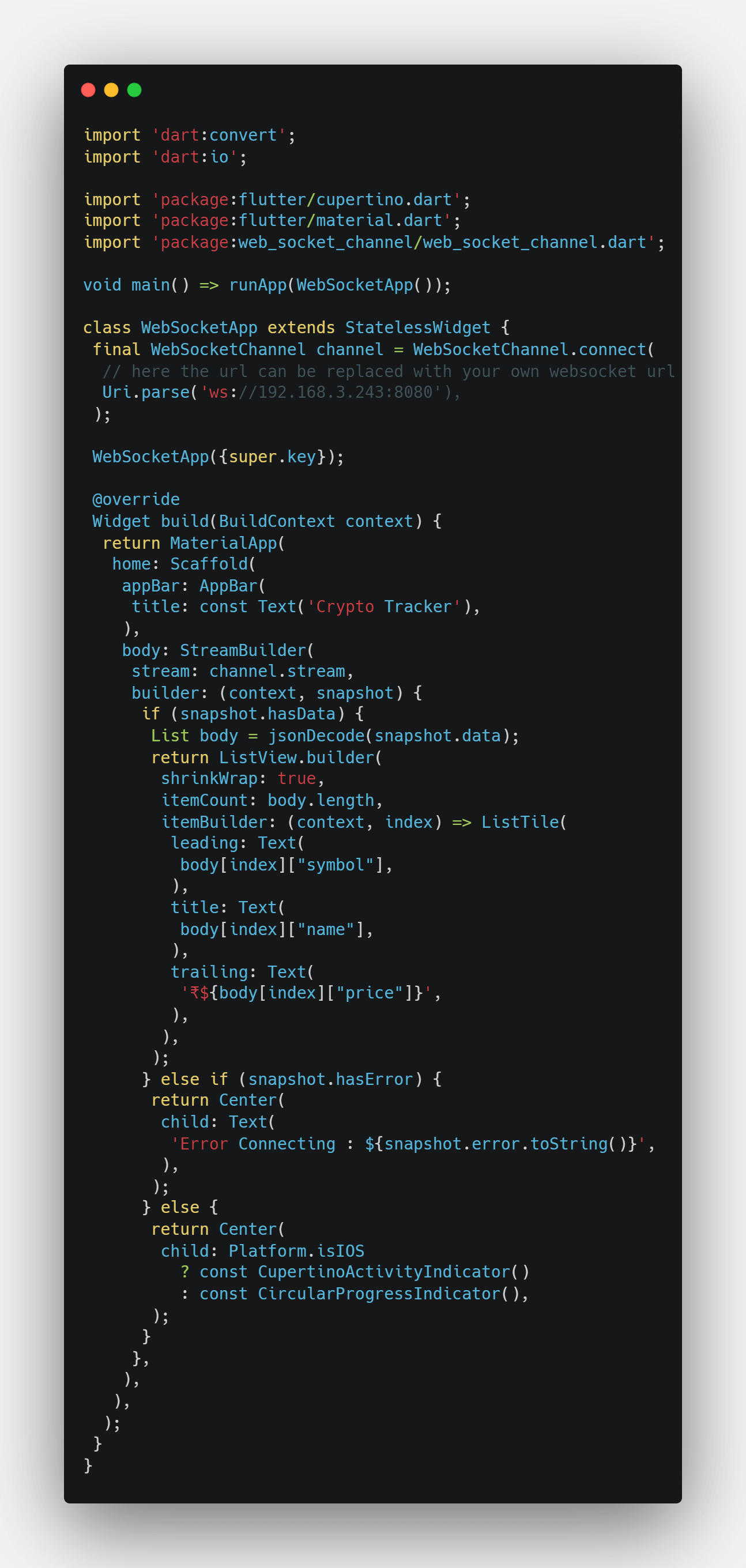
The application will now connect to a WebSocket using the StreamBuilder widget and will display the required information from the server.

What are the Reasons to Consider WebSockets for Real-Time Communications?
- WebSockets allow for open communication and real-time updates
- WebSockets are consistent with HTML and offer backward compatibility with previous HTML publications. Thus, they are compatible with all the latest web browsers including Apple Safari, Mozilla Firefox, Google Chrome, etc.
- WebSockets are compatible with desktop, web, iOS, and Android WebSockets platforms.
- Multiple WebSocket connections with the same client can be opened on a single server, for greater scalability.
- WebSockets can stream various firewalls and proxies.
- There are several open-source resources and examples for integrating WebSockets in an application such as the JavaScript library Socket.io.
Final Thoughts
The blog shows an efficient way to generate real-time functionality to build real-time apps using WebSockets and Flutter. Our experienced development team at Concetto Labs, a renowned Flutter app development company provides bidirectional communication channels between clients and servers to create interactive and user-engaging experiences that fulfill the client’s requirements. Developers can create scalable, cross-platform real-time applications with Flutter’s robust WebSocket support and server-side Dart. hire flutter developers if you need help developing real-time communication features for your application.
Are you Ready to Integrate Flutter to Develop Real-Time Communication Apps?
Get in touch with Us!


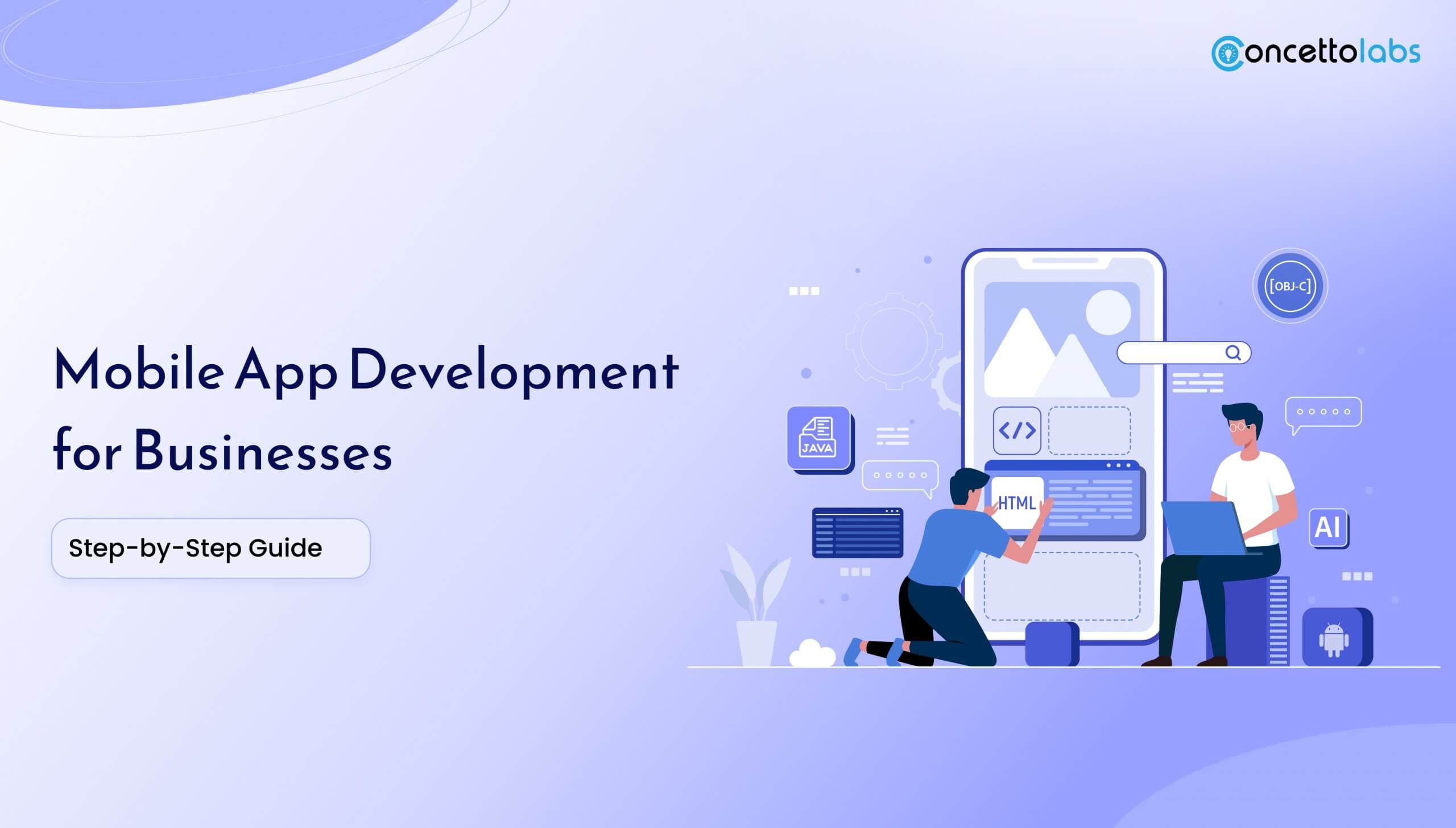
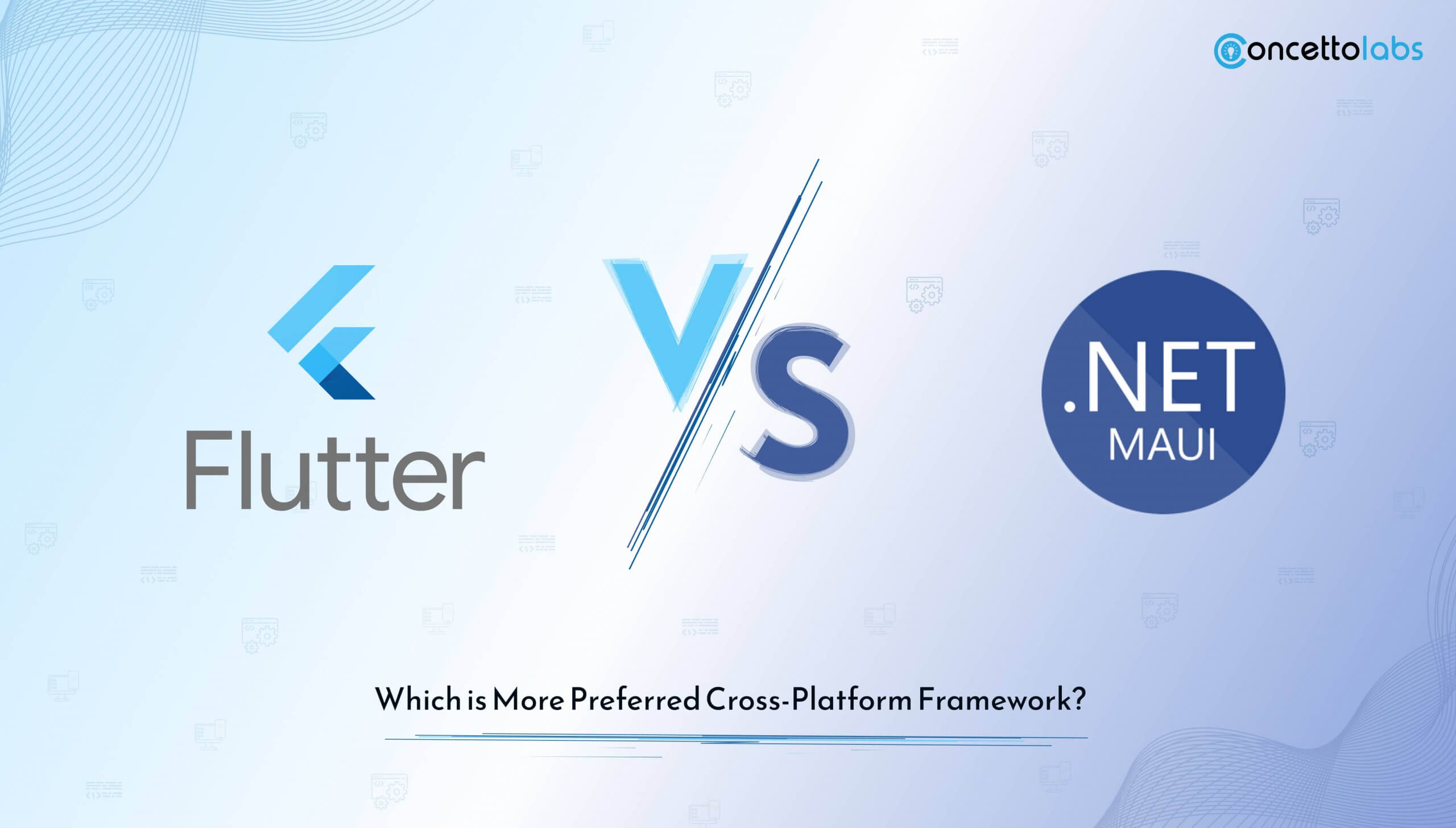





 Indonesia
Indonesia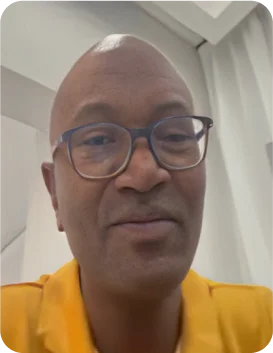
 Botswana
Botswana
 USA
USA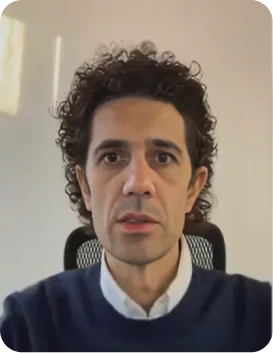
 Italy
Italy
 Panama
Panama





 USA
USA UK
UK Saudi Arabia
Saudi Arabia Norway
Norway India
India Australia
Australia